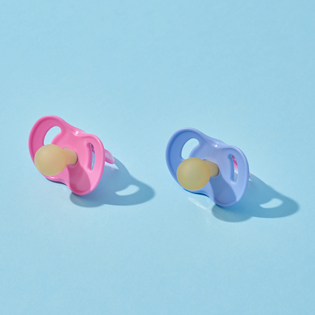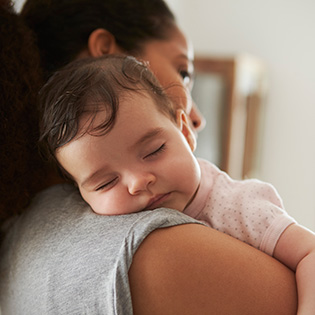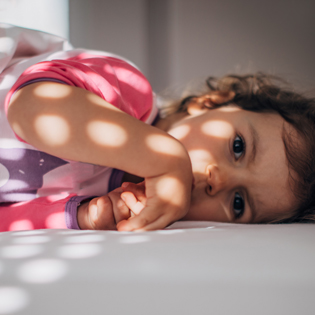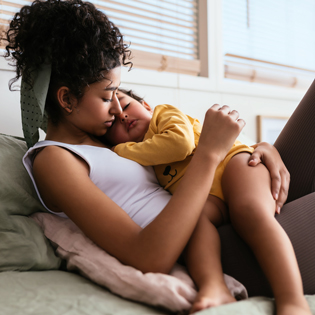You've likely seen headlines about measles outbreaks across the United States and around the world — even after health experts declared the disease "eliminated" in the U .S. decades ago.
Truth is, this highly contagious disease can still spread via unvaccinated people here and travelers who aren't vaccinated and bring measles to the U.S. from abroad.
That’s concerning for everyone, but it’s especially scary if you have a baby who’s too young for the measles vaccine, as measles can lead to serious complications in young children.
Since you can’t put your baby in a bubble until she’s vaccinated, here’s how to reduce the risk she'll get measles and what to do if your child is inadvertently exposed to the disease.
What is measles?
Measles (also called rubeola) is a highly contagious respiratory disease that’s caused by a virus. Its telltale symptom is a rash that covers the body, starting on the head and spreading down.
Children under the age of 5 are especially vulnerable to potential complications of measles, including:
- Ear infections, which can cause permanent hearing loss
- Diarrhea, which can put babies at risk of dehydration
- Bronchitis, laryngitis or croup
- Pneumonia
- Swelling of the brain, known as encephalitis, which can leave a child with an intellectual or hearing disability
About 1 in 5 people in the U.S. who get measles need hospitalization. Measles can also be fatal.
When do babies get a measles vaccine?
The Centers for Disease Control and Prevention (CDC) recommend that babies receive a first dose of the measles, mumps and rubella (MMR) vaccine (which can be administered with the varicella vaccine, in which case it's known as the MMRV shot) when they’re 12 to 15 months old and a second dose between the ages of 4 and 6 years old.
Read This Next
The MMRV vaccine can be given to children 12 months to 12 years old. However, pediatricians do often give the first dose of the MMR and varicella vaccines separately because there's a slight risk of febrile seizures after the first dose when they're given together.
Can my baby get a measles vaccine before age 1?
Not usually, but some babies may be able to get their first dose of the MMR vaccine between the ages of 6 and 12 months old if they live in an area with active measles outbreaks or if they'll be traveling internationally, according to the American Academy of Pediatrics (AAP).[1]
If you’re planning to travel to another country, especially one where measles is spreading, or if you live in an area where there is an active measles outbreak, talk to your practitioner. Your child’s doctor will likely recommend giving your baby an initial dose of the MMR vaccine sooner, after she’s 6 months old. (She'll still need two more doses after that.)
And if your child is at least 12 months old and not yet fully vaccinated, your doctor will usually suggest that she has the full two doses before you leave for your trip overseas, spaced at least 28 days apart.
What are the symptoms of measles in babies?
The first measles symptoms[2] are similar to a cold or the flu and usually begin seven to 14 days after exposure to the virus. They include:
- Runny nose
- Cough
- High fever, which may spike at 104° Fahrenheit
- Red and watery eyes
Two to three days after the above symptoms appear, you may notice very small white spots (known as Koplik spots) in your child’s mouth.
Three to five days after your child’s first symptoms start, a rash of tiny, flat red spots will appear at the hairline.
The rash then spreads down the body to the neck, torso, arms, legs and feet, and lasts for about five to six days. Spots may join together in some areas, and a child may have spikes of high fever.
Are roseola and measles the same thing?
Some parents confuse measles in babies for roseola due to their similar symptoms. It doesn't help that "roseola" and "rubeola" (another name for measles) sound alike.
However, different viruses cause roseola and measles, and roseola rarely causes complications in healthy kids. Roseola infections start with three to five days of high fever and sometimes a sore throat, cough, runny nose and swollen lymph nodes. A rash that lasts a few hours to a few days may then follow.
How can you tell the difference between the two diseases? The rashes caused by each virus vary slightly. The measles rash is flat and starts on the face, then spreads down the body.
With the roseola rash, some spots may be raised, and they start on the torso. The rash may then spread to the face, legs and arms. You might also notice a white ring around some of the spots, which turn white when you press on them.
If you aren’t sure whether your child has roseola or measles, or if you’re at all concerned about your baby’s symptoms, reach out to your child’s pediatrician right away.
What causes measles in babies?
Measles is caused by a virus and circulates much like the common cold. When an infected person coughs, sneezes or talks, droplets containing the virus enter the air. These droplets eventually fall and contaminate nearby surfaces.
An unvaccinated baby can then catch the disease by breathing in contaminated air droplets or by touching an infected surface and then touching her face.
The measles virus is highly contagious. One person who’s sick with the measles will infect 90% of the unvaccinated people around them and can spread the disease for up to four days before and four days after developing a rash.
An unvaccinated baby can catch the measles just from being in the same room as a sick person, even if the person left up to two hours earlier.
Your baby is at greater risk of the measles if she’s:
- Unvaccinated
- Traveling internationally
- Unvaccinated and in an area with an active measles outbreak
- Deficient in vitamin A, which is rare in the U.S., but it can cause more severe complications
What happens if a baby is exposed to measles?
If you think your baby may have come in contact with the measles virus, call the pediatrician ASAP.
If your child is unvaccinated and not yet showing symptoms, your doctor may recommend IV immunoglobulin. Given early enough, this antibody injection can reduce the risk of infection and lower the odds of complications.
The doctor may also suggest giving your little one a dose of the MMR vaccine, which can help to reduce the severity and duration of symptoms if it’s done within 72 hours of contact with the virus.
No matter if or when you think your little one was exposed to the virus, your doctor may do a quick blood draw to test for measles. If it comes back positive, your practitioner may refer you to your local health department and recommend isolating your baby at home for four days before and four days after a rash appears.
How do you treat measles in babies?
There is no specific treatment for measles. Measles treatments in babies focus on managing symptoms and include:
- Fever reducers. Age-appropriate medications to manage fever and pain may include acetaminophen or ibuprofen (only for babies 6 months and older). Check with your doctor before giving your child either medication, and carefully follow dosing instructions.
- Saline nose drops. Regularly flushing out your baby’s nose with saline drops can help relieve stuffiness.
- Salt water rinse. Cleaning the mouth with fresh water with a tiny pinch of salt several times a day helps ease soreness.
- Antibiotics. A prescription can help treat any bacterial infections caused by measles, such as an ear infection or pneumonia, but not the measles itself.
- Vitamin A. Your doctor may suggest a high dose of vitamin A, which may help reduce the severity of measles.
How can I protect my newborn from measles?
For starters, be mindful of who interacts with your baby. Keep your child away from anyone who has not been vaccinated and has traveled or lived in an area with measles.
It's also best to avoid crowded indoor spaces like movie theaters and malls when you're with your baby.
If you live in an area where a measles outbreak is happening, talk to your child’s pediatrician about your options, which may include getting the MMR/MMRV vaccine early.
Otherwise, be sure to follow your child’s recommended vaccination schedule and get her first and second MMR dose on time. While measles in babies remains relatively rare in the U.S., the measle shots could save her life.











































 Trending On What to Expect
Trending On What to Expect





